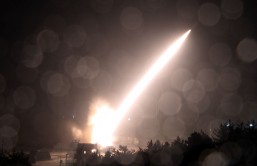The highly-anticipated Mars landing of a European Space Agency (ESA) spacecraft has come to a halt. Speculations have surfaced that something went wrong during the touch down.
The ExoMars Schiaparelli is supposed to make history on the Martian ground last October 19, 2016. However, it becomes clear that the vessel's less-than-a-minute silence appears to signal that it met more than just a technical difficulty.
Although no definite data have been acquired about the incident, high hopes continue to float around. The ExoMars group believes that the information collected by the spacecraft will be sufficient to proceed to the next level. The ESA is working on a 2020 launch of a life-seeking ExoMars roving vehicle.
In a conference, David Parker, the agency's Director of Human Spaceflight and Robotic Exploration, declares that there is a tremendous amount of information on the Schiaparelli. He also cushions that ensuing investigation related to the botched touch down will likely take time to resolves.
Following the Trace Gas Orbiter's (TGO) successful entry into Mars atmosphere, it is the Schiaparelli's turn to buoy up the stage that was supposed to usher the ESA into a new level. However, the vessel's signal has simply gone offline.
At the time the lander is supposed to touch the Red Planet's ground, the Schiaparelli has been on course to follow an exhaustive 6-minute landing procedure. The vessel needs to maintain the 13,000-mph or 21,000-kph mark to complete the touch down.
According to Germany-based Andrea Accomazzo, ESA's head on Solar and Planetary Missions, the space capsule manages to complete the initial approach as the lander maneuvers into the Martian atmospheric layers.
The supersonic parachute engages on time signifying that the deployment of the heat field went as planned. However, the equipment has been ejected far too early that made the lander behavior gone awry.
There are nine thrusters that were supposed to assist the Schiaparelli touch down. However, the less-than-five second boost is way too short to manage the spacecraft's landing.
Accomazzo observes that the status of the capsule is still unclear since the vessel's descent information is still being studied. Locating the lander will be difficult even if an orbiter will be utilized to acquire images.
In line with this, NASA's Mars Reconnaissance Orbiter (MRO) has gathered data about the Schiaparelli's botched landing. A couple of new structures on the Red Planet's surface have been cited. The glowing spot is believed to be the parachute while the darker mark can be the impact point of the ESA lander when it plunged to the ground after its thrusters died down shortly.
Since the MRO has zeroed in on the crash position, more images about the occurrence are expected to be captured.








